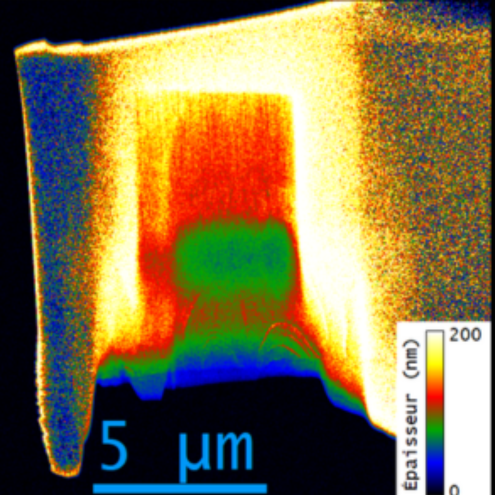
An electron energy-loss spectrometer (EELS) was coupled with a transmission electron microscope (TEM) in the LECA facilitywithin the IRESNE Fuel Studies Department (DEC).
This coupling is used to study and therefore better understand phenomena coming into play in irradiated fuel on very small scales thanks to the acquisition of reliable and accurate data.
More specifically, this technique is used to:
- Determine the thickness of thin films (100 nm) used for characterisation purposes on a nanometric scale, thereby allowing us to quantify the density of defects, precipitates, dislocations, and fission gas bubbles in fuels
- Locally quantify elements, including He, O and Xe on a nanometric scale, and to define their degree of oxidation (U, I, Mo, etc.) in order to infer their speciation.
The experimental results obtained by coupling EELS and TEM can be fed directly into computer tools to calculate the behaviour of irradiated fuel used on the PLEIADES platform: bubble density, dislocations, speciation, etc.